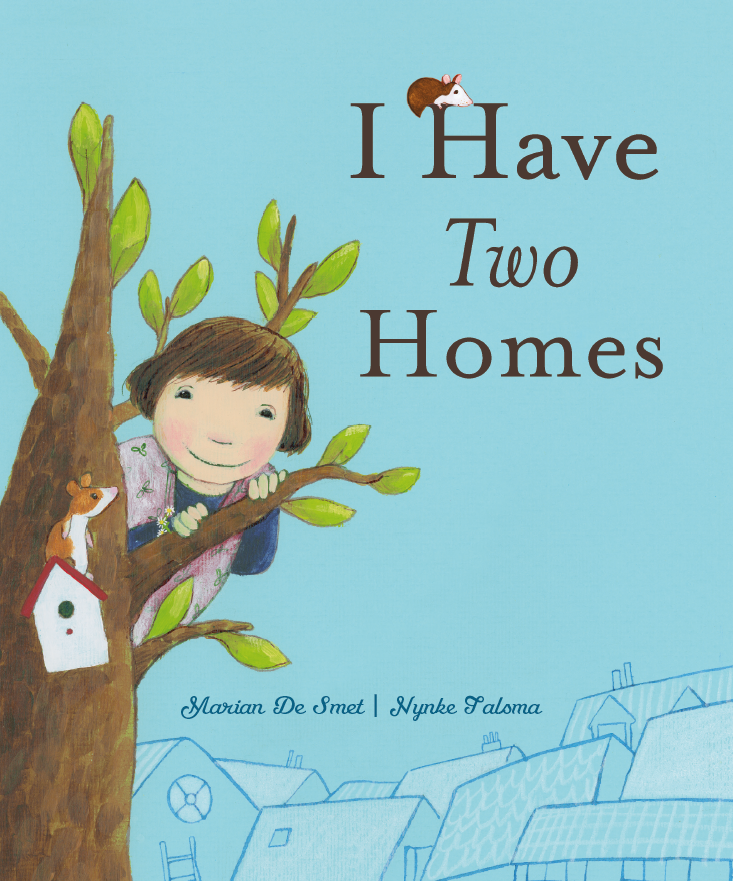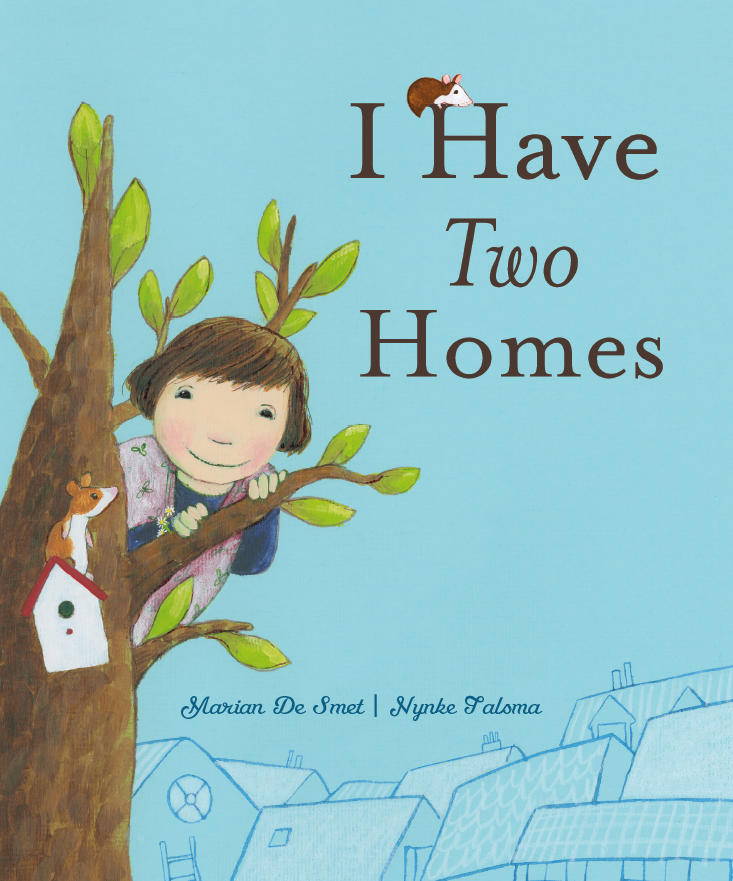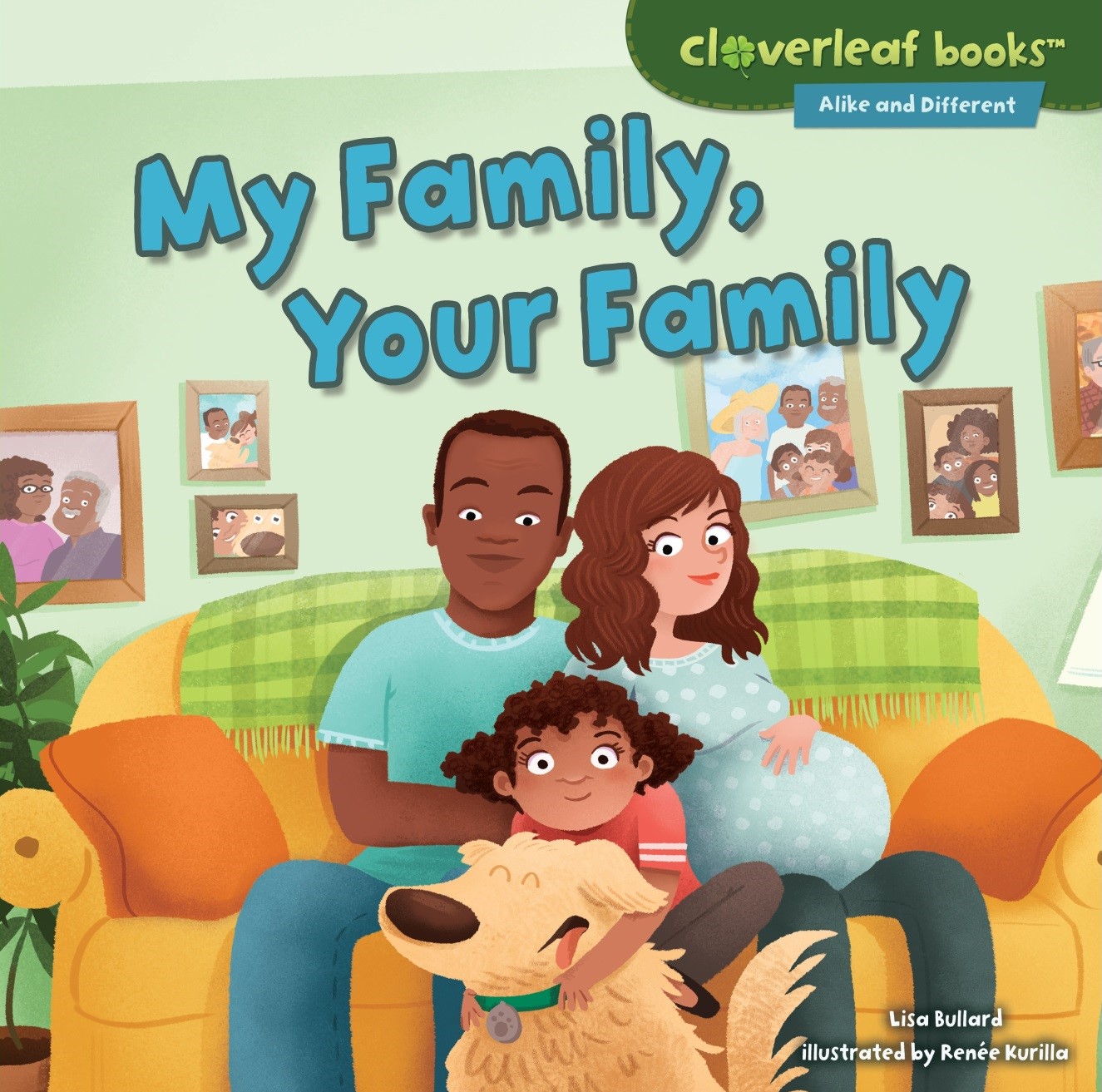When we think of family, we think of words such as love, togetherness, and warmth, as well as complex, separate, and/or consisting of friends. Family includes many members or only a few, and it can be loud or quiet, whispers of shy people or stern looks from serious individuals. Family. Family. Family, comes in different forms that can change over time!




You can learn more about the different family make-ups by reading the following children’s books which celebrate many different family structures. From a young child’s point of view of her parents’ divorce to another child’s adoption by a single parent, we illustrate the various family structures that exist in the world!
1. I Have Two Homes
By Marian De Smet | Publisher: Clavis

Two homes filled with love.
In I Have Two Homes, a young girl, Nina, narrates her experience with her parents’ divorce. Nina explains how it used to be a nuclear family structure, where it was both her parents together and her. But as time passes, the family becomes two separate ones. Nina experiences many changes during the divorce process such as not having both her pets in the same home and not having both her parents in one house. Despite the changes, Nina’s parents always remind her of their unyielding love for her. For instance, Nina’s parents both attend a pool event to see Nina swim in the deep pool for the first time. Although her parents were not happy with each other, they still made a family for Nina in two separate homes.
In this story, we focus on a nuclear family structure where it’s two parents and children. The family structure then changes, where the previous family members still exist, but there is a possibility of it becoming a step family. A step family consists of individuals who choose to get remarried after divorce and create a step family involving two separate families merging into one new unit. For children ages 4-8, they will learn about how divorced parents can do things separately, but also come together to celebrate their child(ren)’s accomplishments. Even though there are two different homes, the child(ren) will still receive love from their parents.
2. My Family, Your Family
By Lisa Bullard | Publisher: Lerner

You only need love to be a family.
In My Family, Your Family, Makayla, a young girl, discusses the differences and similarities between families in her neighborhood. Makayla is going to have a younger brother and her parents encourage her to see that something different can be great. The first family we meet is Mateo’s family which includes his parents, siblings, and his grandparents. This family is an example of an extended family as it includes many family members who are related by marriage or by blood living in the same house. The next family Makayla meets is a same-sex couple who have no children. This family structure is a childless family referring to a couple who cannot or choose not to have children. As Makayla’s mother puts it, you only need love to be a family.
Makayla then meets Olivia who has two different homes because of her parent’s divorce. Olivia talks about having a stepdad and step siblings. In Olivia’s case, the reader learns about a step family, which involves two separate families merging into one new family. This can happen when a parent decides to get remarried after divorce with another parent who has children. The other parent becomes a step parent and their children become step siblings. After Makayla visits Olivia, we meet Jake who was brought up by his grandparents. Jake’s grandparents teach him new stuff from the years of experience they have. In this case, the family structure is a grandparent family referring to grandparents who raise their grandchildren for a variety of reasons. Sometimes the child(ren)’s parents may not be present in the child(ren)’s life.
The final family that Makayla visits is Parker’s family. Parker is adopted and has two dads. We learn that Parker’s biological mom could not take care of him, and so Parker’s dads knew Parker was meant to be their kid. Here we have an example of a nuclear family where there are two parents and a child. When Makayla heads home, she also realizes that her aunt is the only parent in her family and has three children. Makayla proudly states that her aunt’s family is great because everybody does their part to help out. Makayla’s aunt’s family is an example of a single parent family where only one parent is raising one or more children on their own.
For children ages 5-8, they will learn about the many different family structures that can exist in the world along with the love, patience, and understanding it takes to become a family.
3. Motherbridge of Love
By The Mothers’ Bridge of Love | Publisher: Barefoot

One gave you life, and the other taught you how to live it.
Motherbridge of Love is a poem from the perspective of an adoptive mother and her child. With short exchanges between the little girl and her adoptive parent, we learn that one mother could not provide a home for her child and that is when the adoptive mother took care of the little girl. The story focuses on the little girl born in China and how she received two different kinds of love from her mothers and learned different things from them. Although the little girl’s mother could not take care of her, her adoptive mother took over and filled that role.
In this poem, an adoptive mother talks about the role she plays in the family structure of a single parent family. As we learned about this family structure in the previous book, it entails a parent raising one or more children on their own. In this case, the adoptive mother decides to take care of a child she always wanted. For ages 5-8, children will learn about the different kinds of love that parents can give their children. They will also become more aware about the variety of family structures that do not always include two parents. Along with encouraging the love that adoption can bring, this book encourages cultural awareness between the East and West with teaching adopted children their own heritage.
Conclusion:
From these three children’s books, children can start to learn about the many different family structures there are in the world. There were only six family structures we discussed: nuclear family, single parent family, extended family, childless family, step family, and grandparent family. Children should also be aware that family structures can become a combination of two or more different ones and divorce and adoption can change them as well. There is no right or wrong way as to how a family should be structured as long as there is love and support for one another! So, let’s encourage our children to be open to the diversity of families there exists in the world.
